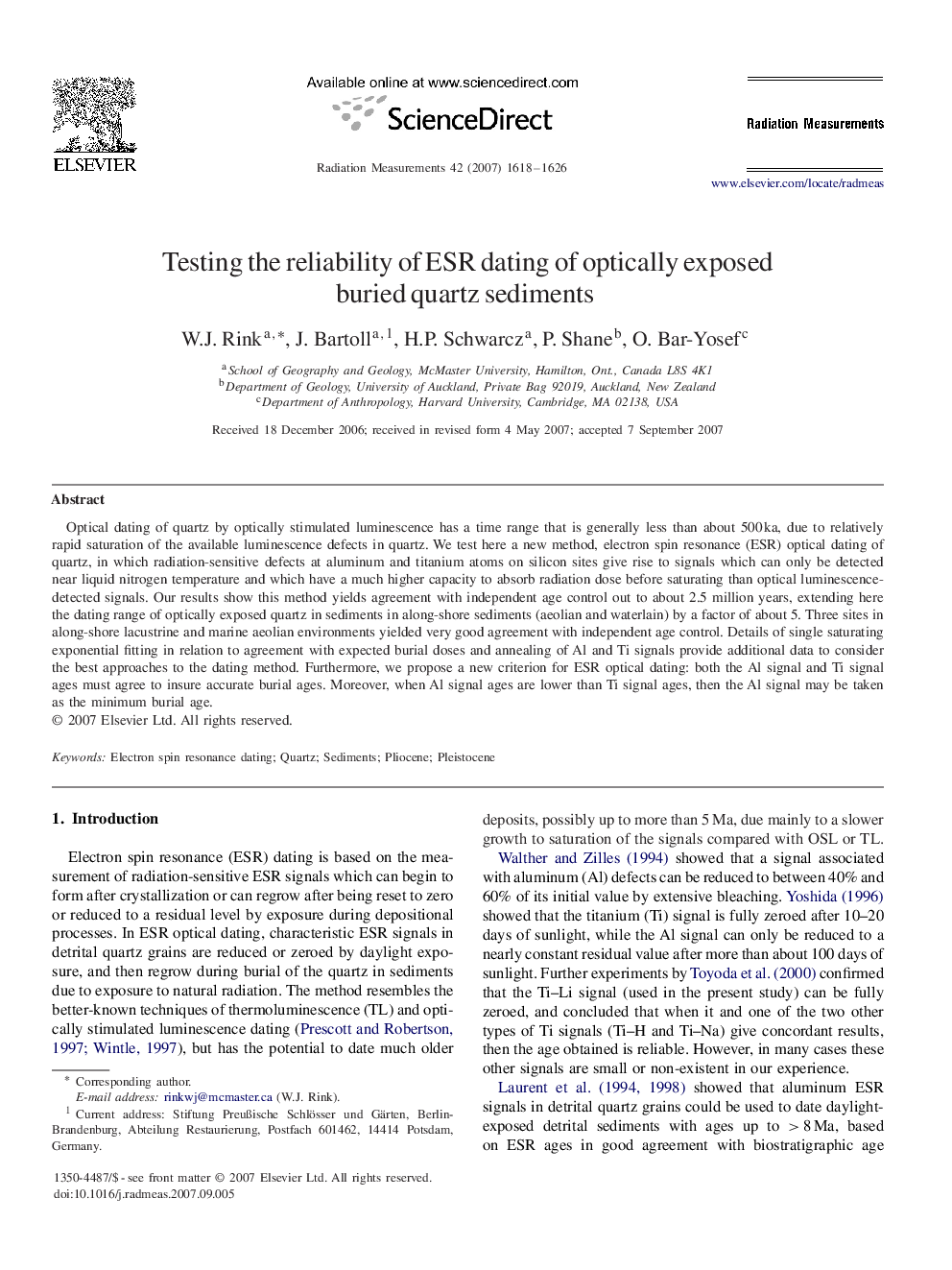| Article ID | Journal | Published Year | Pages | File Type |
|---|---|---|---|---|
| 1888861 | Radiation Measurements | 2007 | 9 Pages |
Optical dating of quartz by optically stimulated luminescence has a time range that is generally less than about 500 ka, due to relatively rapid saturation of the available luminescence defects in quartz. We test here a new method, electron spin resonance (ESR) optical dating of quartz, in which radiation-sensitive defects at aluminum and titanium atoms on silicon sites give rise to signals which can only be detected near liquid nitrogen temperature and which have a much higher capacity to absorb radiation dose before saturating than optical luminescence-detected signals. Our results show this method yields agreement with independent age control out to about 2.5 million years, extending here the dating range of optically exposed quartz in sediments in along-shore sediments (aeolian and waterlain) by a factor of about 5. Three sites in along-shore lacustrine and marine aeolian environments yielded very good agreement with independent age control. Details of single saturating exponential fitting in relation to agreement with expected burial doses and annealing of Al and Ti signals provide additional data to consider the best approaches to the dating method. Furthermore, we propose a new criterion for ESR optical dating: both the Al signal and Ti signal ages must agree to insure accurate burial ages. Moreover, when Al signal ages are lower than Ti signal ages, then the Al signal may be taken as the minimum burial age.
